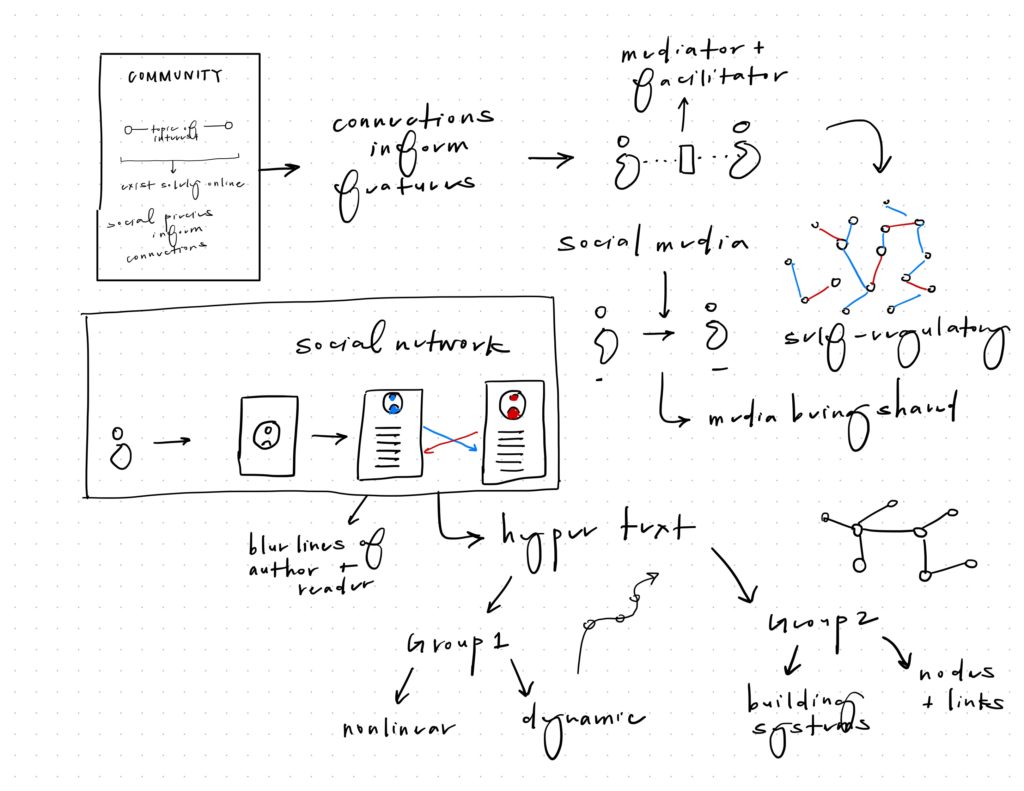

In consideration of early forms of social networking, a common theme that emerges is that of self-regulatory systems. Particularly in the case of WELL, several of the seven design goals established by the team include fostering an environment that is “an open-ended universe”, “self-governing”, and “a self-designing experiment”. By doing so, technology becomes both a mediator and facilitator in the connections between humans, allowing these interactions to transcend geographic constraints at much greater speeds. As these networks require adoption by its users on a moderate to large scale, this evolution from the computer’s initial role of allowing the user to make decisions at faster speeds and access information highlights an important facet of the human condition that being social is central to our survival.
In Recognizing the Symptoms of Hypertext Kathleen Gygi categorizes HyperText in two distinct groups of differing functions. Group 1 portrays information in a non-linear and dynamic way, modeled after the manner in which ideas may “jump” from one another in the mind. Group 2 organizes information in the form of building systems, forming nodes and links, another model used to conceptualize the human mind in the field of cognitive science. HyperText allows users to navigate spaces more intuitively, by modelling after the natural ebb and flow of thoughts. However, in the case of community spaces, it is important to note that humans are not thoughts. Meeting and engaging with others does come with a sense of sponteneity by entering new and unfamiliar spaces (perhaps linked there by a HyperText, within the digital world), but to foster sustainable and meaningful relationships requires extended exposure and engagement.

Very clear text & sketches that helps illustrate the two groups!